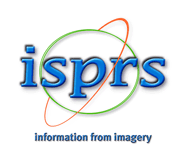Mobile LiDAR Data and Imagery for Digital Twin Generation
Keywords: iPhone LiDAR, Digital Twins, Mapping accuracy, Constrained Bundle Adjustment, Ultrasonic Positioning System
Abstract. Low-cost sensor solutions such as smartphones provide a great opportunity for democratization of mapping among different communities including those working in digital twin application areas. Smartphone acquired imagery and/or built-in LiDAR sensors provide relatively dense point clouds with limited accuracy especially in the absence of GNSS. This type of scanning tool can provide linear measurements in an inexpensive way and can be used with minimal operator training. In this study, we provide two solutions for improving the accuracy of the final point clouds produced by iPhone-based LiDAR and images. One solution utilizes length observations as constraints in the network. The other solution incorporates loosely coupled perspective centre (PC) positions obtained by ultrasonic ranging into a photogrammetric bundle adjustment. The test results show that inclusion of the length observations in the solution improves the relative accuracy of the point cloud for applications such as culvert mapping where absolute accuracy is not of high necessity. In the indoor mapping case, the relative point cloud accuracy for the solutions without and with the PC observations is approximately the same. However, image alignment success and computation time are significantly improved by including the PC observations. Moreover, the inclusion of PC observations provided better compensation of systematic image point errors.





